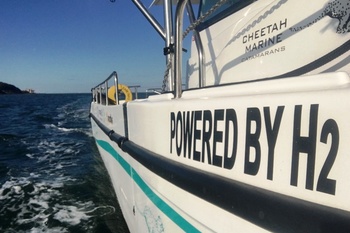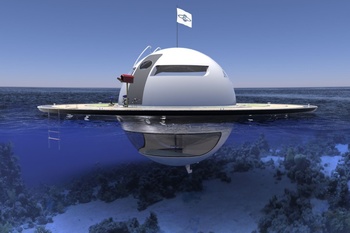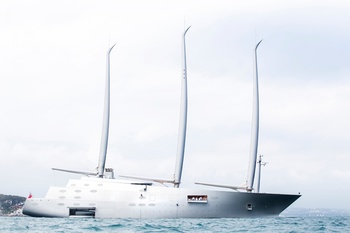Vaan is a young Dutch shipyard specialising in catamarans. Its main feature will be a combination of elite level boats with an environmentally responsible approach to yacht building.

«Recreational cruising needs to get greener, and - fast. Simply because others shouldn't have to pay for your pleasure. There is no single reason why this should be the case. By looking at materials and design from a different angle, by thinking innovatively, even a luxury yacht can be made green. You just have to want it»," says company founder Igor Kluin.
«The green» bias is no accident. In the past, Kloin was co-founder and vice president of De Groene Zaak, an organization that lobbied for an approach to economics that gave priority to the UN's ideas on sustainable development. Cloyne also founded Qurrent, a company specializing in clean energy.
Last week, Vaan unveiled the concept for its first project, the 12.8-meter Vaan R4. There will be a choice of white or coal-black variants.
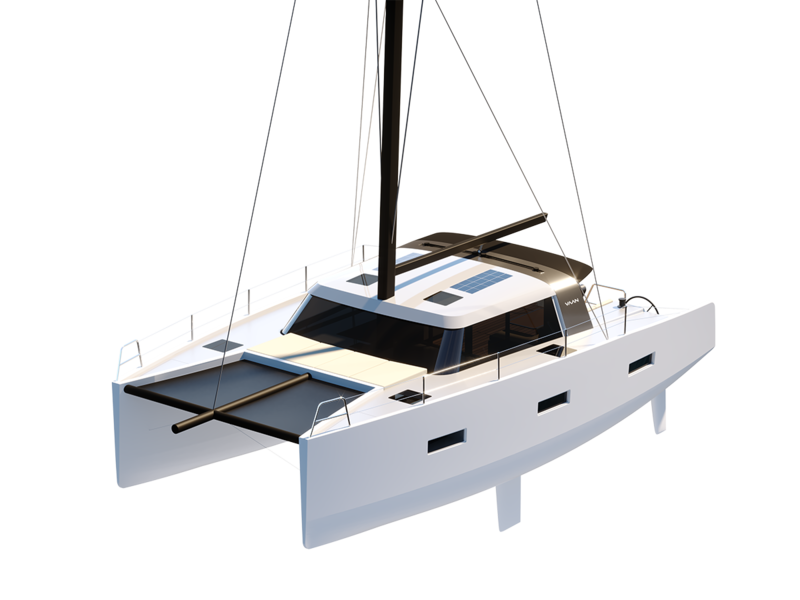

In line with the yard's green concept the hull will be 60% recycled aluminium, obtained by recycling old window frames, road signs and car plates.
The aluminum profiles on board the catamaran will be 75% recycled. Vaan's partner in the production of the R4 will be the Norwegian company Hydro - a market leader in low-carbon aluminum. Aluminium was not only chosen for the boat because it is recyclable, but also because it is a material that is strong, safe and easy to build.

Instead of teak wood for the deck, cork wood will be used «under teak». Naturally the materials will be FSC certified which means that the manufacturer is taking good care of the forests.
The textiles on the R4 will be only natural fabrics.
The boat will not feature leather, unless leather accessories are brought on board by a guest. Instead of leather, recycled pineapple leaf fibers will be used.
«Only in Europe 80 thousand boats are scrapped annually. Only two thousand of them are dismantled properly. The rest 78 thousand are incinerated at waste recycling plants, releasing huge amounts of CO2 into the atmosphere», - says the website of Vaan.
The new catamaran is supposed to help improve this bleak statistic a bit. According to the shipyard, the R4 will be 100% recyclable.
Only environmentally friendly renewable energy sources will be used in the construction of the catamaran whenever possible. In those cases where the company will turn to partners and will not be able to influence this aspect, Vaan will pay compensation for the emissions made for its own sake.
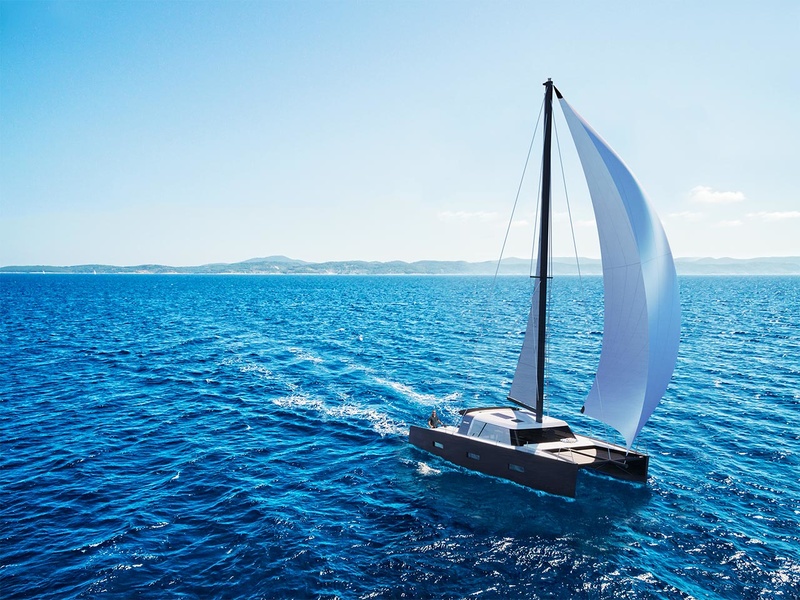
Besides the environmental aspects, the second important mission of the catamaran's creators was to maintain a balance, in which it would be characterized not only by a level of comfort but also by good seaworthiness. To achieve this they engaged Thys Nikkels, CEO of Dykstra Naval Architects and Serge Kats , five-time Laser world champion in the 1996 and 2000 Olympics as consultants.
One result of this collaboration was a new cockpit concept. First, the two helm wheels are shifted as much as possible aft of the cockpit, instead of being lifted into the roof. On the one hand, being close to a wide open transom with water splashing underneath, a catamaran rudder feels about the same as on a monotype boat, but has no roll problems and travels at higher speed. On the other hand, since the cockpit is on the same level as the saloon (only the glass wall of the superstructure separates them), the helmsman is not separated from the family and friends who travel with him on the R4.
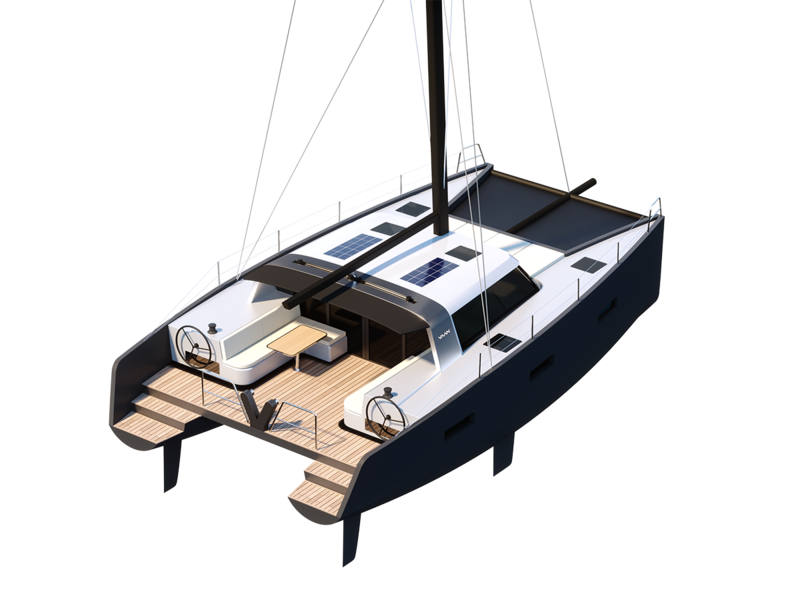
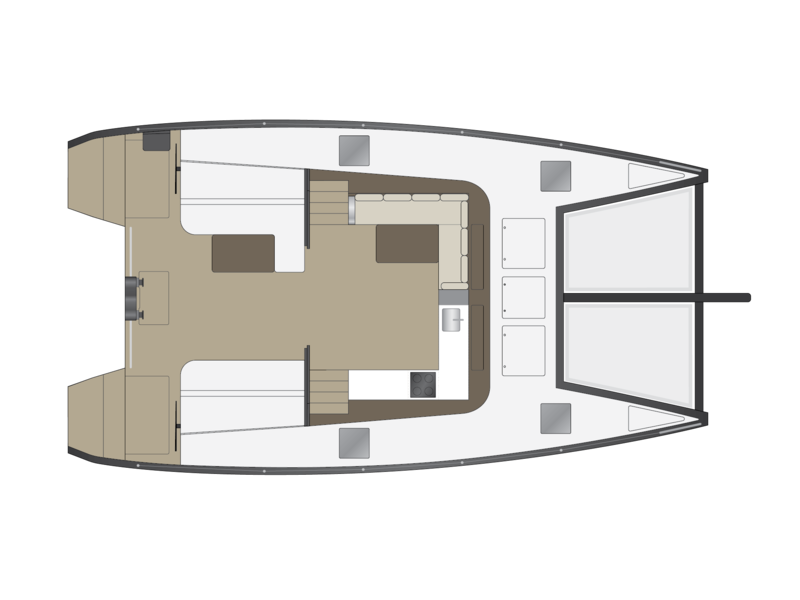
A second convenient solution in the cockpit is the elimination of the bulky fixed roof. Instead of it, a bimini top can be installed in a matter of minutes and quickly retracted if necessary. So no matter where the R4 is in the hot Mediterranean or the cool Norwegian fjords, and no matter what the weather is like, the cockpit can be designed to be a comfortable place to protect from the sun or to enjoy it.
The R4 designers have developed three different layouts for the lower cabins. They differ in the way they propose to use the forward cabin in the right («guest») hull of the catamaran.
In it, you can install a bunk bed, a trapezoidal double bed, or you can make an additional bathroom in the compartment. In all three cases, the aft bedroom with its two beds, which can be configured as a double if you wish, will not be affected by the changes.
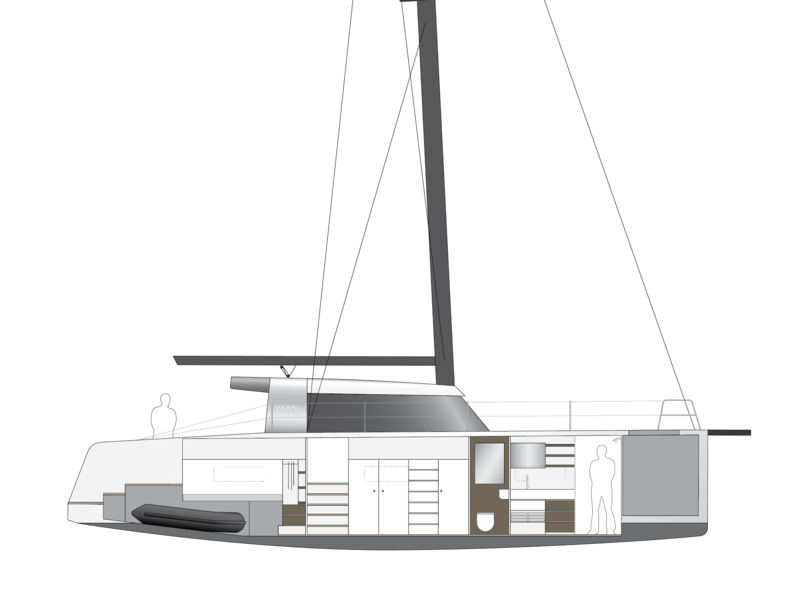
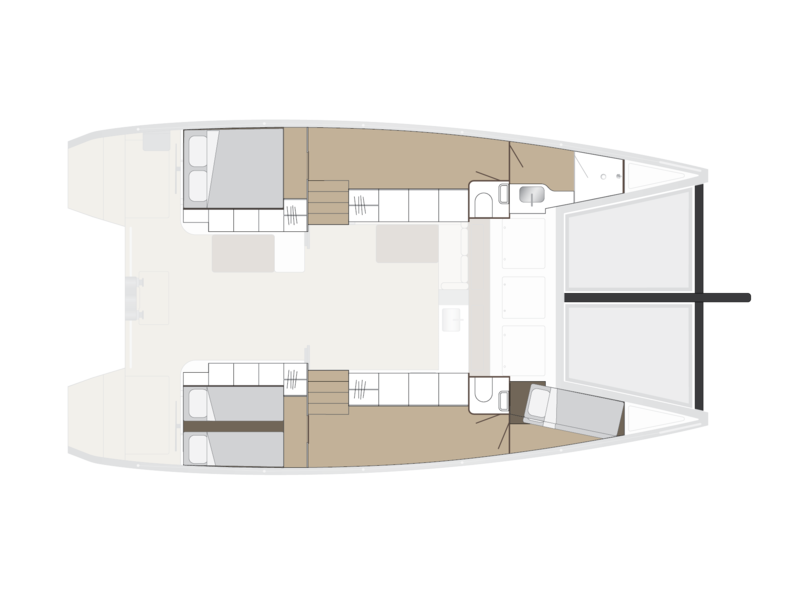


Another small option concerns the corridor in this hull. On option starboard, there will be two seats and a table to read or work at.
The R4's port hull is the master suite with a large bed aft, while in the forward area, there is a separate galley and a spacious bathroom.
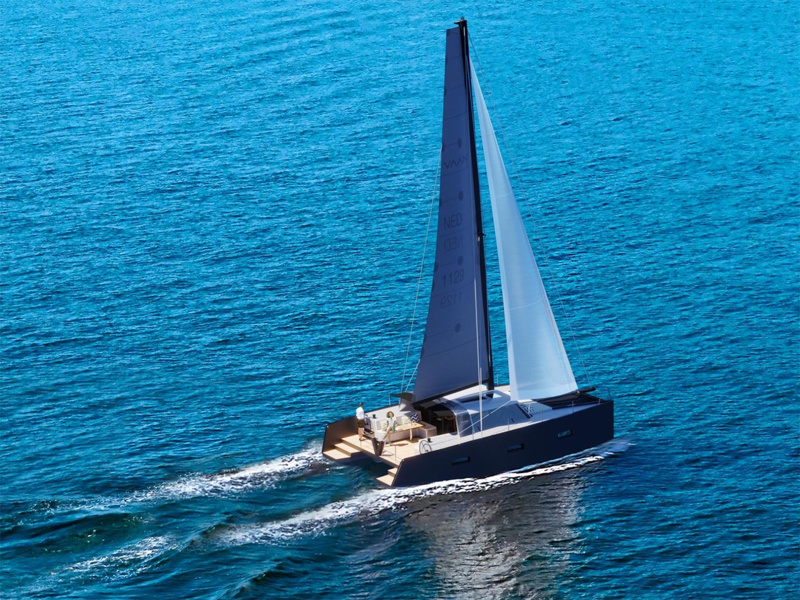
R4 is already available for pre-order.
The catamaran is expected to cost €399,000 excluding VAT.
The ready-to-use catamaran will be delivered to its owner no earlier than a year later. When placing the order the client will be offered the earliest date when he could get his R4. If he agrees, the cost of such priority recording (2.5 thousand euros) is included in the total cost of the boat.

Vaan warns that the number of applications they will accept for the next two years is very limited. The company explains this by the desire to focus more on quality rather than quantity of boards produced.



